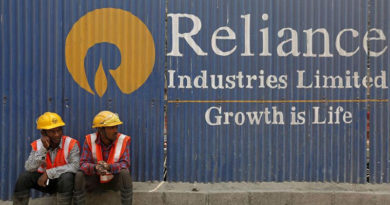Wholesale prices rise on top of nine months on major decline in retail inflation
The moderation in food prices led to a sharp fall in retail inflation in November. However, wholesale prices-based (WPI) inflation rose to a nine-month peak during this period. The main reason for this is the rise in prices of manufactured products.
According to data released on Monday by the government, retail inflation based on the Consumer Price Index (CPI) declined to 6.93 percent in November. However, this is more than the RBI target. Food prices declined to 9.43 percent in the period under review, from 11 percent in October. On the other hand, wholesale prices of manufactured products rose 1.55 percent to reach the top of nine months. It was 1.48 percent in October 2020 and 0.58 percent in November last year. Earlier this month, the RBI said in its monetary policy that inflation would increase except for momentary relief in the winter months. Also, retail inflation based on the consumer price index was estimated at 6.8 percent in the December quarter and 5.8 percent in the March quarter. In fact, the RBI is responsible for maintaining the retail inflation rate at 2 percent with an average of 2 percent fluctuation. It focuses on keeping retail inflation within the prescribed range while fixing the main interest rate in the monetary policy review.
Wholesale inflation… highest in February
According to the data released on Monday, wholesale inflation in November is the highest after February. During that time it was 2.26 percent. According to the data, the pace of increase in prices of food items declined slightly during the period under review. During this period, the prices of manufactured goods have risen sharply. The wholesale price of food items rose 3.94 percent in November, compared to 6.37 percent in October. During this period, prices of vegetables and potatoes continued to rise. Non-food articles inflation also remained at a high of 8.43 percent. However, fuel and electricity inflation stood at (-) 9.87 percent.
Impact of increasing demand, signs of improvement in the economy: ICRA Principal Economist Aditi Nair said core-wholesale inflation rose to a 22-month high of 2.6 percent in November, with a sharp rise of 0.8 percent from the previous month. In our opinion, the increase in the prices of main commodities and commodities, including crude oil and mineral oils in December, will be offset to some extent by the reduction in food inflation. At the same time, Sanjay Kumar, CEO and MD of Elior India, said, prices were rising not because of rising manufacturing costs but because of increasing demand. If it is entirely due to demand then a welcome sign. This indicates an improvement in the economy. However, it has to be carefully monitored whether RBI will tighten monetary policy as inflation increases.
Fuel demand declined 3.6 percent in November: Fuel demand in the country declined 3.6 percent year-on-year in November. However, fuel consumption reached a normal level in October, which again came down in November. However, fuel consumption increased for the third consecutive month on a month-on-month basis due to improvements in transportation and business activities. According to the provisional figures of the Ministry of Petroleum, the total demand for petroleum products declined to 18.8 million tonnes in November from 18.5 million tonnes in November 2019. At the same time, the demand for diesel was down by 6.9 percent to 70.4 lakh tonnes in November. During this period, the demand for LPG increased by four percent to 2.3 million tonnes. However, it fell 2.8 percent on a monthly basis. Aircraft fuel (ATF) sales were down nearly 50 percent to 3,72,000 tonnes as airlines were not operating normally. However, the demand for ATF has improved on a monthly basis.


